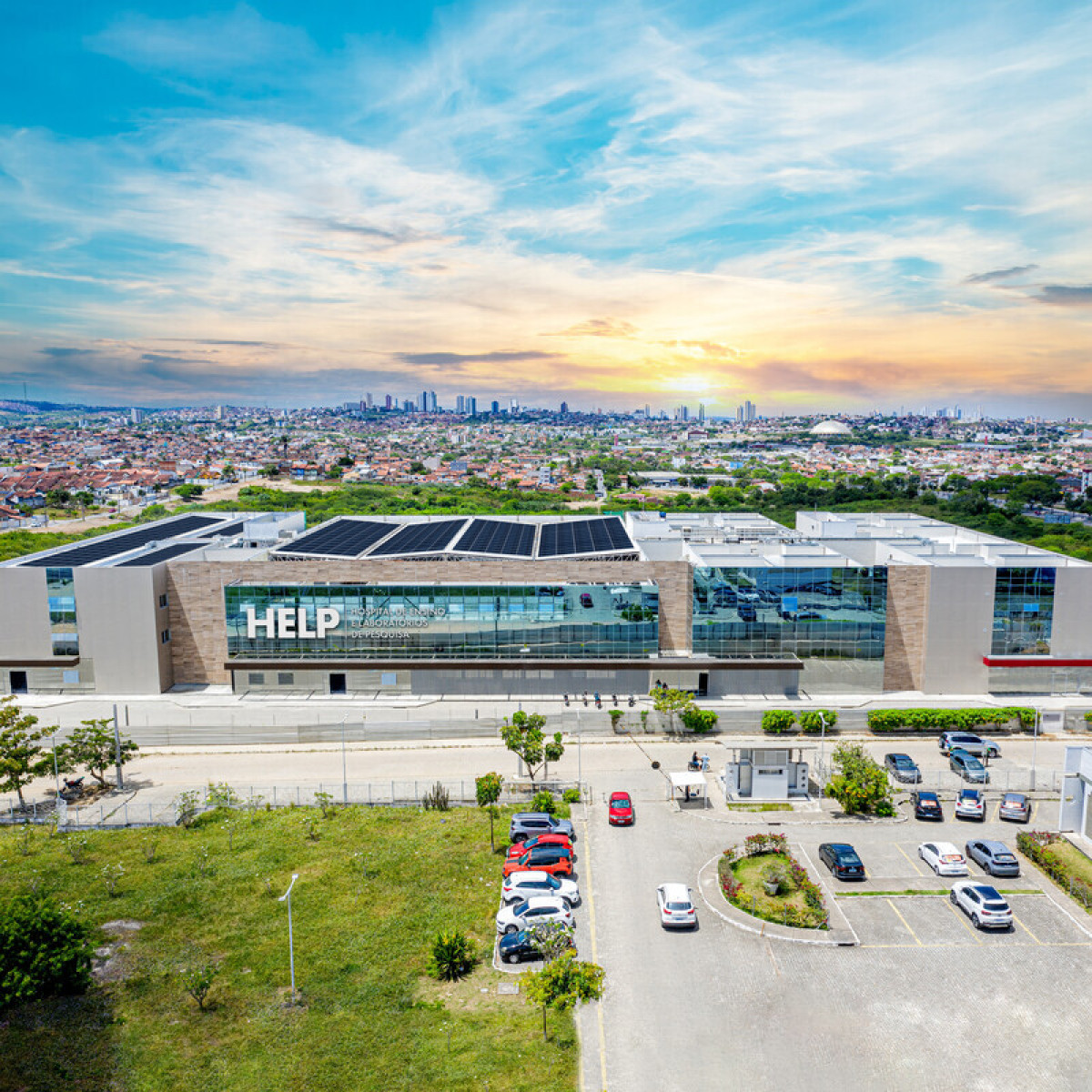12 Feb 2024

Contemporanea Arquitetura e Interiores presents HELP, Hospital de Ensino e Laboratórios de Pesquisa in the Agreste region of northeastern Brazil. Located in a city of approximately 420,000 inhabitants, the new facility reaches more than one and a half million people in its radius of operations. The building includes some peculiar characteristics reflecting the strategic ambitions of the hospital's founding group. HELP was conceived to be a reference centre, capable of repositioning the city of Campina Grande as one of the main medical centres of a region that represents 34% of the Brazilian population.
It is a hospital of regional size, encompassing services of high complexity, with care for a mixed public – philanthropic and private - as well as a centre of excellence for medical training and scientific development that is linked to one of the most important and renowned medical schools in the region.
Due to its specific characteristics, the Contemporânea office has developed a unique and innovative building with a conceptual composition that integrates design, technology, sustainability, and humanization. It has 30,000m2 of built area in a program of needs that includes outpatient clinics, hospitalizations, emergency care, a surgical and obstetric centre, an imaging centre, an ICU, an oncology centre, nuclear medicine, hemodialysis, and a study and research centre.
The definition of flows was one of the major challenges of the project, given that the hospital needed to house different audiences and have activities beyond health services, including teaching and research. In addition, the hospital was designed to meet the strictest national and international hospital accreditation standards, such as ONA and JCI.
To offer an advanced environment not only in medical care but also in resource efficiency, HELP provides a unified basis for technology and sustainability, which should be seen as complementary elements. The hospital houses equipment and solutions for high-tech building facilities and systems, many of them still uncommon in Brazil. It has sophisticated building automation resources for the management of its systems and subsystems, including a rainwater collection and storage network, an irrigation system, an intelligent air conditioning system (air renewal, exhaust, and cooling with negative and positive pressure), and a pneumatic system for transporting medicines. Additionally, the building has its solar power plant, designed to sustain 100% of the building's demands and save about 100 thousand 100,000 monthly, which will be given to support assistance services, notably in the area of paediatrics.
Regarding hospital humanization, the project uses resources from Biophilia and Neuroarchitecture, incorporating elements of nature into the building, through its internal gardens and natural lighting, the intentional composition of colours, materials, and textures, to set up a therapeutic environment, in addition to promoting well-being for employees, companions and visitors.
HELP was developed from a modern vision of architecture for healthcare, introducing a human-centred design approach, and the building as a transformative instrument capable of contributing to the hospital's objectives: to restore, welcome, and comfort.
Technical sheet